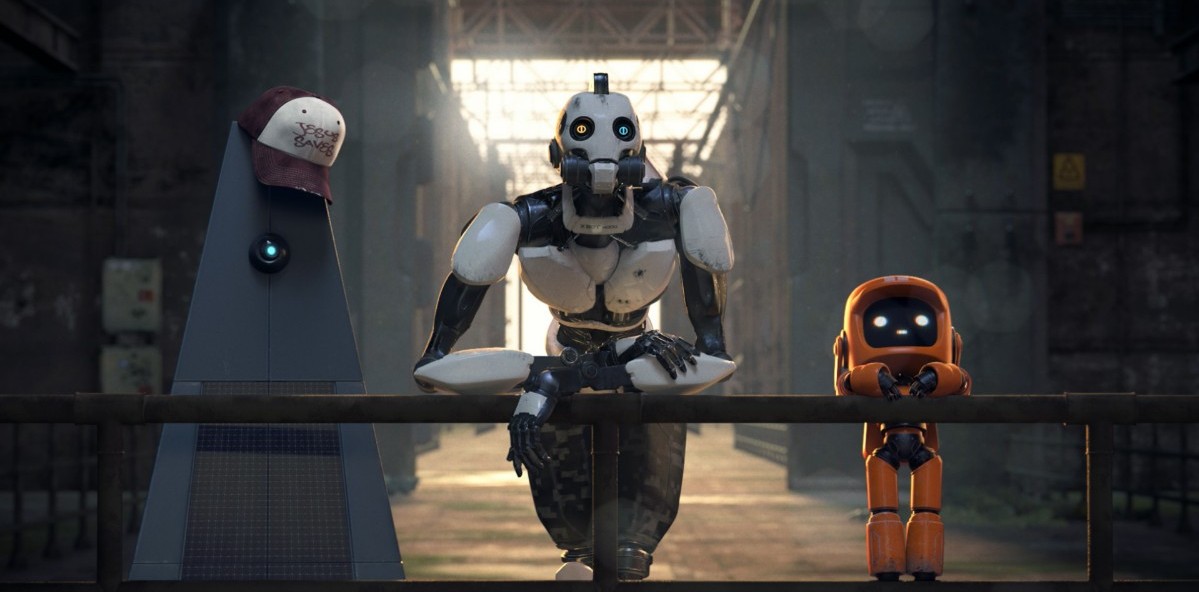Sometimes a good obsession doesn’t go away. And sometimes, it’s just repackaged under a new brand. Take David Fincher who tried to remake “Heavy Metal” circa 2008— re-imagining the classic 1981 erotic sci-fi fantasy animated film based on the iconic magazine of the same aesthetic and spiritual remit. The plan was, employ some of the best filmmakers in the world (James Cameron, Robert Rodriguez, et al.) and director-crowdsource a bunch of animated shorts for a brand-new animated fantasy anthology.
READ MORE: the 100 Most Anticipated Films Of 2019
In the end, “Heavy Metal” never happened, but Fincher’s dream of an adult-animated anthology series made by several different filmmakers never died and he, by and large, transposes the previous idea onto the new project, “Love Death + Robots.”
READ MORE: The 50 Most Anticipated TV Shows & Mini-Series Of 2019
Teaming up with one of his original would-be “Heavy Metal” collaborators, Tim Miller (“Deadpool“), and mostly eschewing fantasy for just hard and cold sci-fi, Fincher supervises a series of 18 animated short films that all fall under the umbrella of the title “Love Death + Robots.” Some focus on, you guessed it, love, others on death and yes, a good number of them feature robots and span all three. Regardless of their diverse and disparate tones, animation styles, and subject matter, “Love Death + Robots” series is kaleidoscopically eclectic with short stories that run the gamut of emotions, genres, and aesthetics. If there’s a running theme, it’s perhaps just how much many of these shorts are insane, scary and mind-bogglingly graphic. On the one hand, some vignettes are hilarious, other times frightening or badass, but either way, “Love Death + Robots” is a series that deserves everyone’s immediate attention.
READ MORE: Best TV Shows of 2018
Pooling some of the most talented animators working today, each short is wholly disconnected from each other, but there are themes that run through each— humanity’s reliance on technology, the environmental crisis, and female empowerment —that give the overall experience a “Heavy Metal” and “Liquid Television” vibe. And what seems like narrow parameters on the surface are actually inventively leveraged and becomes limitless possibilities on the idea of love, death, and robots.
The episode “Sonnie’s Edge” (really, they’re just short films) uses hyper-realistic CGI animation to tell the story of an abuse survivor-turned-elite pit-fighter that uses monsters to do gladiatorial battle. It’s 17 minutes of pure beauty, blood, and chaos, that ends with a shocking resolution that will leave your jaw on the floor.
“Three Robots” uses similar hyper-realism to track three robots on a post-apocalyptic city tour, as they attempt to figure out all the peculiar ways that humans interacted with each other before the world ended. Instead of dismemberment or blood spatter (common to these shorts), the vignette features laugh out loud moments of great A.I. characters trying to find out why humans enjoyed bouncing basketballs and petting cats.
A clear standout, from a style, story, and execution point of view, is “The Witness”— something akin to “Spider-Man: Into the Spider-Verse” but on acid. The animation is so gorgeous and unique that you almost forget you’re watching a story about a murderer chasing a naked woman through the streets, while briefly stopping at a fetish sex club for a striptease. Yes, it’s very questionable why the woman has to be naked throughout the majority of the short film’s 12-minute run-time, but when viewed in the grand scheme of what “Love Death + Robots” is attempting to do, it just works.
And so on, and so on. Each short is different from the last, with stories about a hell-like space ship on the edge of the galaxy, ghost fish in a desert, an app that shows multiple universes where Hitler died in ridiculous ways, and one where yogurt took over the world. Needless to say, “Love Death + Robots” is a unique viewing experience.
Also, it’s clear from watching any of the short films that “Love Death + Robots” is gratuitous, but gleefully so and all the filmmakers wearing this don’t-hold-back superfluousness like a badge of honor. Whether it’s with nudity (and boy, there’s a lot), violence (check), or outlandish humor, it’s all pushed to the edge of taste, but it all coalesces into an experience unlike anything else you’ll see on TV today (And for those special types of fans who enjoyed the original titillation with the soft-core side of “Heavy Metal,” well, there are boobs. Lots and lots of boobs).
And there’s no right or wrong way to enjoy “Love Death + Robots.” What David Fincher and Tim Miller have presented with the first season’s filmmakers is a platform to say whatever they want, in whatever animated style they choose. It’s a freedom that is rarely seen, even in the ordinarily-free environments of streaming services.
Throwing typical television concepts like episode-lengths and serialized storytelling out the window, “Love Death + Robots” is a breath of fresh air for anyone that enjoys quality filmmaking, beautiful animation, and genre-defying storytelling. Overall, it’s a fascinating experiment and one we should be happy that Fincher remained fixated with all these years. [A]





